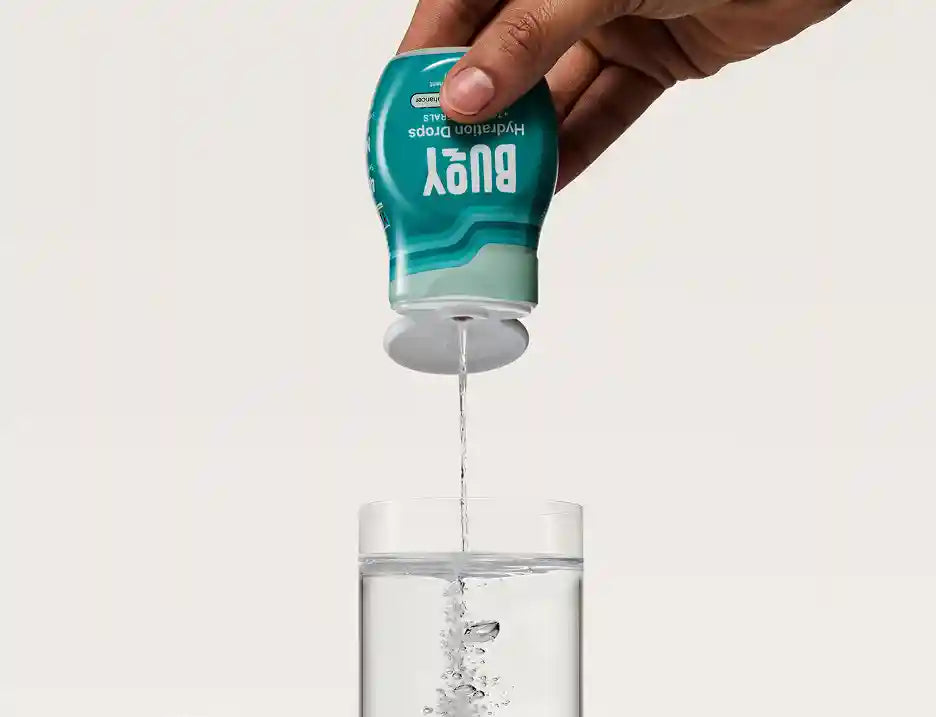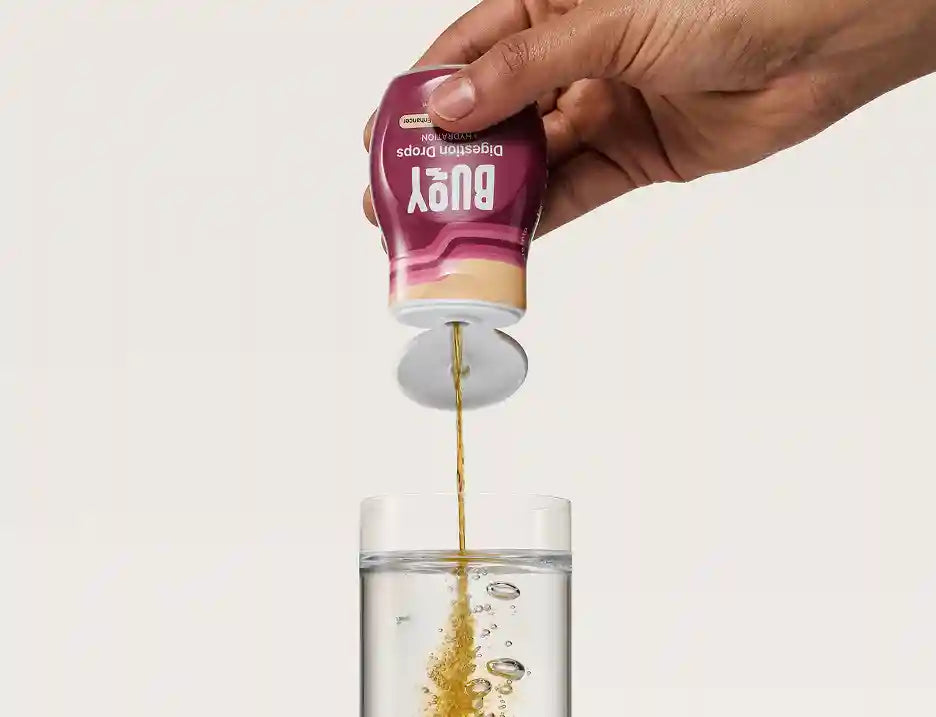
Managing Stress with POTS: Mindfulness and Relaxation Techniques
Living with Postural Orthostatic Tachycardia Syndrome (POTS) can feel like a balancing act, especially when stress enters the picture. Stress doesn’t just affect your mental well-being—it can also worsen POTS symptoms, triggering faster heart rates, increased fatigue, and more.
Stress management POTS is an important part of improving your overall quality of life with this condition. So what can you do?
Fortunately, small, consistent mindfulness and relaxation practices can help.
Essential Takeaways:
- Stress Can Worsen POTS Symptoms: Stress triggers the “fight or flight” response, which can worsen POTS symptoms like increased heart rate, dizziness, and fatigue. Without effective stress management, it becomes harder to control daily symptoms and maintain well-being.
- Mindfulness and Relaxation Offer POTS Stress Relief: Incorporating mindfulness practices, relaxation techniques, and daily stress-management strategies can help ease anxiety and reduce POTS symptoms. Small, consistent efforts like deep breathing, gentle yoga, or journaling can make a big difference in managing stress and improving overall health.
This guide will walk you through mindfulness practices, relaxation techniques, and daily habits to help you manage stress and POTS symptoms effectively.
- How Stress Impacts POTS Symptoms
- Mindfulness Practices for POTS Patients
- Relaxation Techniques to Reduce POTS Symptoms
- Daily Strategies to Manage Stress with POTS
- When to Seek Professional Help for Stress Management
- Finding Calm with POTS
How Stress Impacts POTS Symptoms
Stress and POTS are closely connected. When you’re stressed, your body activates the “fight or flight” response, releasing stress hormones like cortisol and adrenaline. This response can worsen POTS symptoms by:
- Increasing Heart Rate: Stress can intensify tachycardia, making it harder to stay calm and comfortable. Learn how POTS can affect heart health.
- Worsening Fatigue: Chronic stress drains your energy, leaving you more exhausted throughout the day.
- Disrupting Blood Flow: Stress can exacerbate blood pooling in the lower body, increasing dizziness and lightheadedness.¹
POTS stress relief isn’t just about feeling better mentally—it’s critical for keeping your symptoms under control and improving your daily life.
Mindfulness Practices for POTS Patients
Mindfulness is a powerful tool for calming the nervous system and reducing stress. The best part? It doesn’t require any special equipment or significant commitments.
Mindfulness for POTS
Research shows that mindfulness for POTS can significantly reduce symptoms of mild to moderate depression and anxiety, while enhancing emotional and psychological well-being.
In one large-scale study, participants practicing mindfulness-based cognitive therapy experienced sustained benefits seen three months later.²
Why It Works
Research shows that mindfulness exercises have numerous benefits, including:
- Reducing Negative Emotions: Regular mindfulness practice has been shown to lower feelings of stress, anxiety, and other negative emotions, as well as stress-related cortisol levels. High cortisol levels are associated with fatigue, irritability, and difficulty concentrating, which can worsen POTS symptoms. Reducing cortisol can lead to a more stable mood and better coping skills during challenging times.
- Enhancing Attention: Mindfulness exercises improve sustained attention, helping you stay focused and alert. This can make everyday tasks feel more manageable and less overwhelming. For additional strategies, explore our blog Understanding Brain Fog with POTS: Tips for Mental Clarity.
- Balancing the Nervous System: By promoting relaxation, mindfulness helps regulate the autonomic nervous system, decreasing “fight or flight” responses and encouraging a “rest and digest” state. Over time, this can lead to long-term improvements in how your body responds to stress.¹ ²
These benefits make mindfulness a practical and impactful strategy for anyone living with POTS. Even short, consistent practices can create meaningful change.
How Long You Should Practice
Throughout this guide, we provide suggested times for various mindfulness practices. These are general guidelines—always listen to your body and adjust the duration based on your POTS symptoms and energy levels.
It’s perfectly fine to start with shorter sessions and gradually build up to longer ones as you feel comfortable. What matters most is consistency, not duration. Let’s go over some easy mindfulness practices you can start today.
Deep Breathing
One of the simplest ways to manage stress is through deep, diaphragmatic breathing. This practice not only helps you relax but also has proven benefits for attention, mood, and stress reduction. Try this:
-
Get Comfortable: Sit or lie down in a comfortable position.
-
Place Your Hands: Place one hand on your chest and the other on your abdomen to feel the movement as you breathe.
-
Breathe Deeply: Inhale deeply through your nose for a count of four, feeling your abdomen rise. Exhale slowly through your mouth for a count of six, letting your abdomen fall.
- Repeat: Continue this cycle for 5-10 minutes to lower your heart rate and calm your mind.
Pro Tip
Pair your deep breathing practice with calming music, a guided meditation, or aromatherapy for an even greater sense of relaxation.¹ ³
Meditation
Meditation helps you focus on the present moment, reducing racing thoughts and anxiety while promoting a sense of calm and clarity. Research shows that even just a few minutes of daily meditation can positively impact mental well-being, improving concentration and emotional resilience.
Start with a simple practice:
-
Find a Quiet Space: Choose a place where you won’t be disturbed.
-
Sit Comfortably: Sit in a chair, on a cushion, or lie down if that’s more comfortable for you.
-
Set a Timer: Start with 5 minutes a day and gradually increase as it feels comfortable.
-
Focus on Your Breath: Pay attention to the natural rhythm of your breathing or silently repeat a soothing word like “calm.”
- Gently Redirect: When your mind wanders, as it inevitably will, gently bring your focus back to your breath without judgment.³
Optional Enhancements
- Try a Guided Meditation App: Apps like Headspace or Calm offer easy-to-follow meditation programs tailored to beginners.
- Use Visualization: Imagine a peaceful scene, like a beach or forest, to deepen relaxation.
- Combine with Aromatherapy: Use calming essential oils, like lavender or eucalyptus, to enhance the experience.⁴ ⁵
Body Scans
A body scan is a mindfulness exercise that promotes relaxation and awareness:
- Lie down or sit comfortably.
- Close your eyes and focus on each part of your body, starting at your toes and working upward. Try to spend about 30-60 seconds on each major body area.
- Notice any tension and consciously relax those areas.² ³
Grounding Exercises
Struggling with daily stress? A simple grounding exercise can help you recenter and calm your mind. Try the 5-4-3-2-1 grounding exercise by taking a moment to notice:
-
Five things you can see: What colors, shapes, or details stand out?
-
Four things you can touch: What textures can you feel?
-
Three sounds you can hear: How would you describe them to someone else?
-
Two things you can smell: What do they remind you of?
- One thing you can taste: Take a sip of water or eat a snack and notice its flavor.² ³
Mindfulness doesn’t have to be perfect—what matters is showing up consistently. Even 5 minutes a day is enough to make a big difference, helping you manage stress and reconnect with yourself.

Deep breathing, meditation, and mindfulness exercises can help calm the nervous system, reduce stress, and alleviate POTS symptoms. Even a few minutes a day can make a difference.
Relaxation Techniques to Reduce POTS Symptoms
Relaxation techniques for POTS can help soothe both your mind and body, creating a sense of calm that eases symptoms. Here are a few to try.
Progressive Muscle Relaxation (PMR)
PMR involves tensing and relaxing different muscle groups to release tension:
- Start with your toes, squeezing them tightly for 5-10 seconds before releasing.
- Move upward to your legs, abdomen, arms, and face, tensing and relaxing each area.
- Finish with deep breaths to enjoy the feeling of relaxation.¹ ²
Gentle Yoga
Certain yoga poses can improve circulation, reduce stress, and calm your nervous system:
- Child’s Pose: Sit back on your heels, stretch your arms forward, and rest your forehead on the floor. Hold for 1-3 minutes, breathing deeply.
- Legs-Up-the-Wall Pose: Lie on your back and rest your legs against a wall to promote blood flow. Stay in this position for 5-10 minutes.
- Seated Forward Fold: Sit with your legs extended, then gently fold forward to stretch your back and legs. Hold for 1-2 minutes.
Remember to move slowly into these poses and only hold them for as long as feels comfortable with your POTS symptoms. The suggested times are guidelines—you can start with shorter durations and gradually increase as your body allows.
Guided Imagery
Guided imagery involves visualizing calming scenes to reduce stress. Here’s how:
- Sit or lie down in a quiet space.
- Close your eyes and imagine yourself in a peaceful setting like a beach or forest.
- Focus on the details—how the air feels, the sounds you hear, and the sights around you. Practice for 5-10 minutes.
Liquid Sunshine Body Scan
- Imagine a warm liquid sunshine flowing through your body, melting tension and soothing discomfort.
- Slowly guide the warmth from your toes to your head, relaxing each area it “touches.” Do this for around 5-10 minutes.¹ ²
Object Body Scan
- Visualize a small object like a smooth stone or a soft ball.
- Imagine it gently releasing tension wherever it touches your body, starting from your head and moving down.¹ ²
Whether you prefer guided imagery, body scans, or other relaxation methods, you have plenty of options to explore. These relaxation techniques work best in a calm environment, so try setting aside dedicated time for them each day.
Daily Strategies to Manage Stress with POTS
Incorporating small POTS stress relief habits into your daily routine can make a big difference. Here’s how:
- Keep a Consistent Routine: Go to bed, wake up, and eat meals at consistent times, even on weekends. This helps regulate your body and reduce stress.
- Take Short Breaks: Step away from tasks for 5-10 minutes to stretch, breathe, or take a walk. These breaks prevent stress buildup and recharge your mind.
- Practice Gratitude Journaling: Write down three things you’re grateful for daily. This simple practice promotes positivity and emotional resilience.
- Pair Relaxation with Daily Tasks: Practice deep breathing while commuting or listen to a guided meditation while lying down. Habit stacking makes mindfulness easier to integrate into your daily routine.
- Hydrate Mindfully: Add electrolytes and minerals like Buoy’s Rescue Drops to your water during relaxation to boost your hydration and overall health.
Small, intentional changes can help you build resilience against stress while managing your POTS symptoms.

Writing in a gratitude journal can help shift your mindset, reduce stress, and promote emotional balance—an easy and effective tool for managing POTS.
When to Seek Professional Help for Stress Management
While mindfulness and relaxation techniques are effective for stress management with POTS, there are times when professional support can be invaluable. Consider seeking help if:
- Stress Significantly Impacts Your Life: If anxiety or stress feels overwhelming and unmanageable, it’s time to reach out.
- POTS Symptoms Worsen with Stress: A therapist familiar with chronic conditions can help you develop tailored strategies.
- You’re Interested in Evidence-Based Techniques: Cognitive Behavioral Therapy (CBT) and biofeedback are proven methods for reducing stress and improving mental health.¹ ²
Look for professionals experienced in chronic illnesses or autonomic disorders. Check out our guide to POTS and Mental Health for links to mental health support for POTS.
Remember, seeking help isn’t a sign of weakness—it’s a proactive step toward feeling better.
Finding Calm with POTS
Stress is a common trigger for POTS symptoms, but with mindfulness and relaxation techniques for POTS, you can take control. Start small with deep breathing or gratitude journaling, and gradually build habits that help you feel more balanced.
Embrace Progress, Not Perfection
Remember, managing stress is an ongoing process. Whether you practice daily mindfulness for POTS, explore relaxation techniques, or seek professional support, each step you take brings you closer to a calmer, healthier life with POTS.
Mindfulness is a Personal Journey
We understand that mindfulness and meditation are deeply personal journeys, and not every approach works for everyone. Our goal is to share tools that have worked for others—like body scans, grounding exercises, and diaphragmatic breathing—while encouraging you to find what resonates with your unique path.
Get More POTS Tips
Looking for more ways to manage your POTS symptoms? Check out our POTS guides to discover more tools and support for living a balanced life with this condition.

Buoy’s Rescue Drops are specifically formulated for POTS, providing 6x the sodium of Hydration Drops with no sugars or additives—perfect for staying hydrated and managing symptoms.
References:
-
Raj, V., Opie, M., & Arnold, A. C. (2018). Cognitive and Psychological Issues in Postural Tachycardia Syndrome. Autonomic Neuroscience: Basic & Clinical, 215, 46–55. Retrieved from https://www.ncbi.nlm.nih.gov/pmc/articles/PMC6160364/
-
Pots, W. T., Meulenbeek, P. A., Veehof, M. M., Klungers, J. & Bohlmeijer, E. T. (2014). The Efficacy of Mindfulness-Based Cognitive Therapy as a Public Mental Health Intervention for Adults with Mild to Moderate Depressive Symptomatology: A Randomized Controlled Trial. PloS One, 9(10), e109789. Retrieved from https://pmc.ncbi.nlm.nih.gov/articles/PMC4198116/
-
Awareness for POTsies. (n.d.). Meditation and Mindfulness. Retrieved from https://www.awarenessforpotsies.org/mindfulness-exercises
-
Power Through POTS. (n.d.). How Meditation Can Transform Your Life and Your Relationship to Pain. Retrieved from https://powerthroughpots.com/2018/06/18/how-meditation-can-transform-your-life-and-your-relationship-to-pain/
- Forbes. (2022). 7 Ways Meditation Can Actually Change the Brain. Retrieved from https://www.forbes.com/sites/alicegwalton/2015/02/09/7-ways-meditation-can-actually-change-the-brain/




